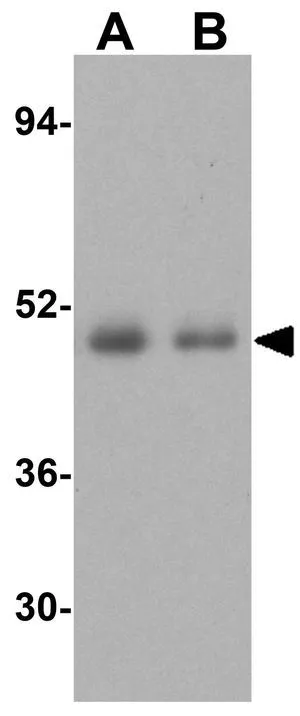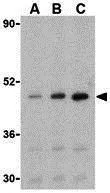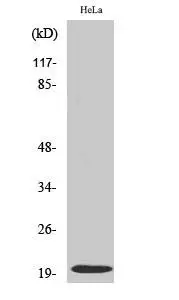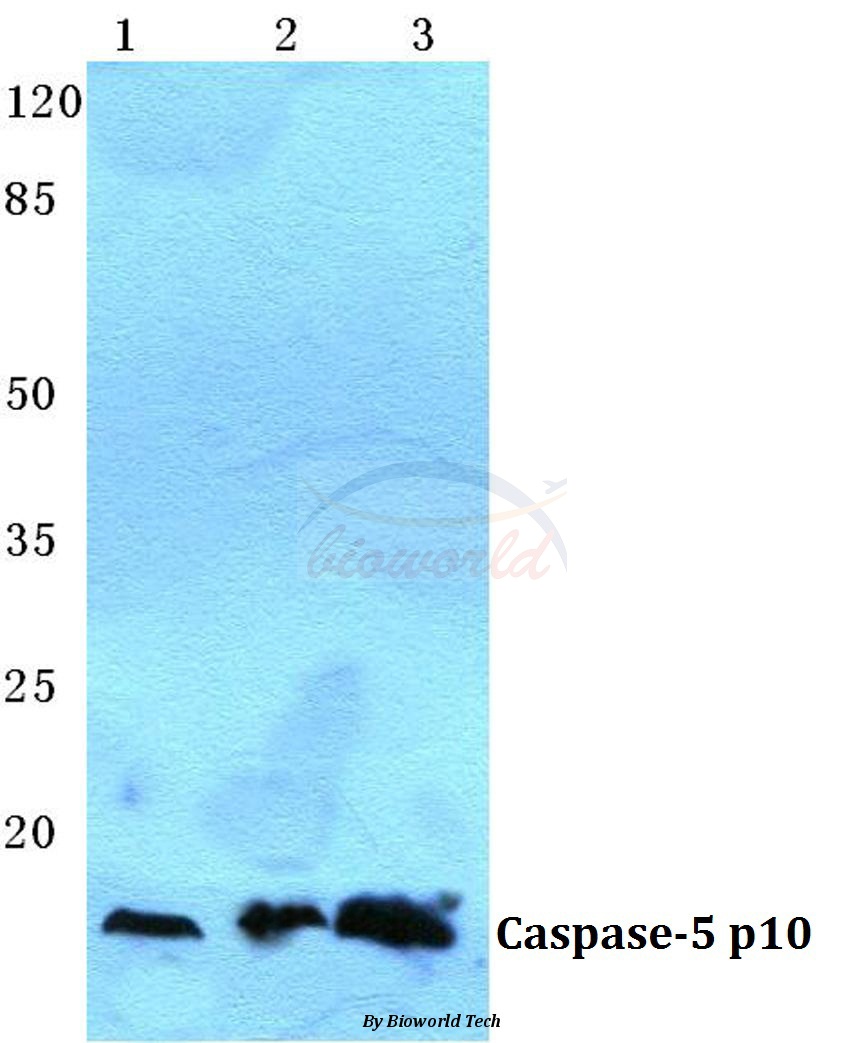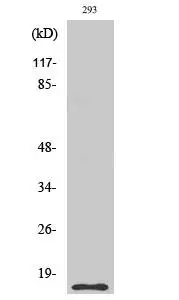
WB analysis of 293 cells treated with etoposide 25uM 1h using GTX86899 Caspase 5 (cleaved Ser331) antibody.
Caspase 5 (cleaved Ser331) antibody
GTX86899
ApplicationsWestern Blot
Product group Antibodies
TargetCASP5
Overview
- SupplierGeneTex
- Product NameCaspase 5 (cleaved Ser331) antibody
- Delivery Days Customer9
- Application Supplier NoteWB: 1:500~1:1000. *Optimal dilutions/concentrations should be determined by the researcher.Not tested in other applications.
- ApplicationsWestern Blot
- CertificationResearch Use Only
- ClonalityPolyclonal
- ConjugateUnconjugated
- Gene ID838
- Target nameCASP5
- Target descriptioncaspase 5
- Target synonymsICE(rel)III, ICEREL-III, ICH-3, caspase-5, TY protease, caspase 5, apoptosis-related cysteine peptidase, caspase 5, apoptosis-related cysteine protease, protease ICH-3, protease TY
- HostRabbit
- IsotypeIgG
- Protein IDP51878
- Protein NameCaspase-5
- Scientific DescriptionThis gene encodes a member of the cysteine-aspartic acid protease (caspase) family. Sequential activation of caspases plays a central role in the execution-phase of cell apoptosis. Caspases exist as inactive proenzymes which undergo proteolytic processing at conserved aspartic residues to produce two subunits, large and small, that dimerize to form the active enzyme. Overexpression of the active form of this enzyme induces apoptosis in fibroblasts. Max, a central component of the Myc/Max/Mad transcription regulation network important for cell growth, differentiation, and apoptosis, is cleaved by this protein; this process requires Fas-mediated dephosphorylation of Max. The expression of this gene is regulated by interferon-gamma and lipopolysaccharide. Alternatively spliced transcript variants have been identified for this gene. [provided by RefSeq, Aug 2010]
- Storage Instruction-20°C or -80°C,2°C to 8°C
- UNSPSC12352203

